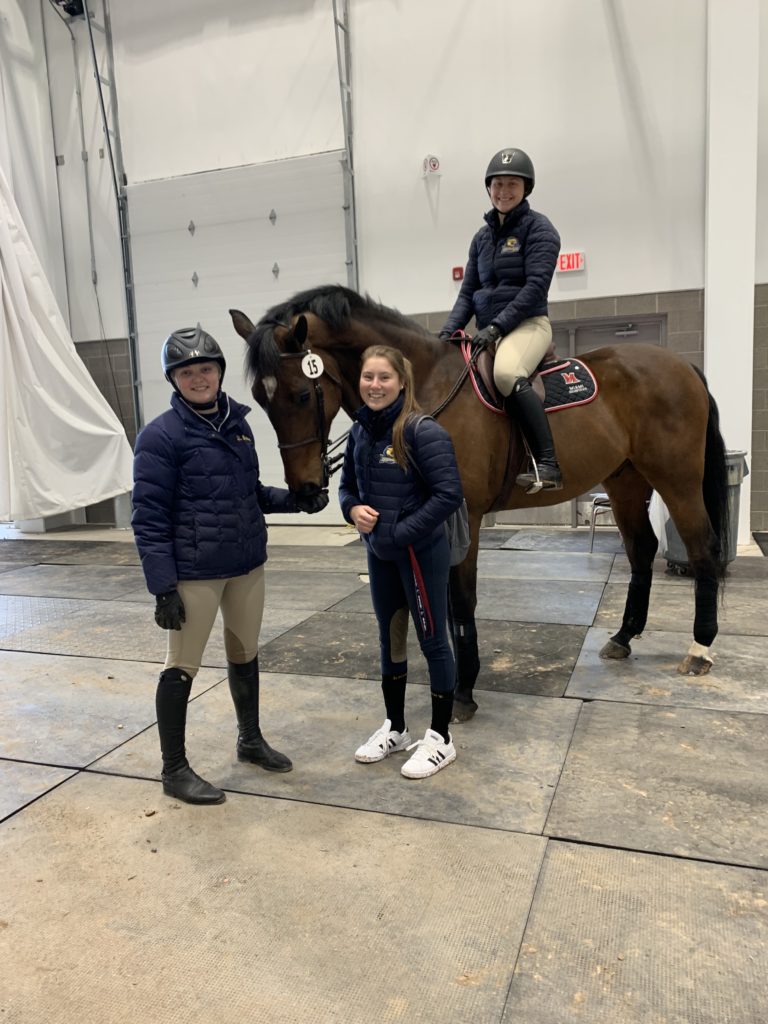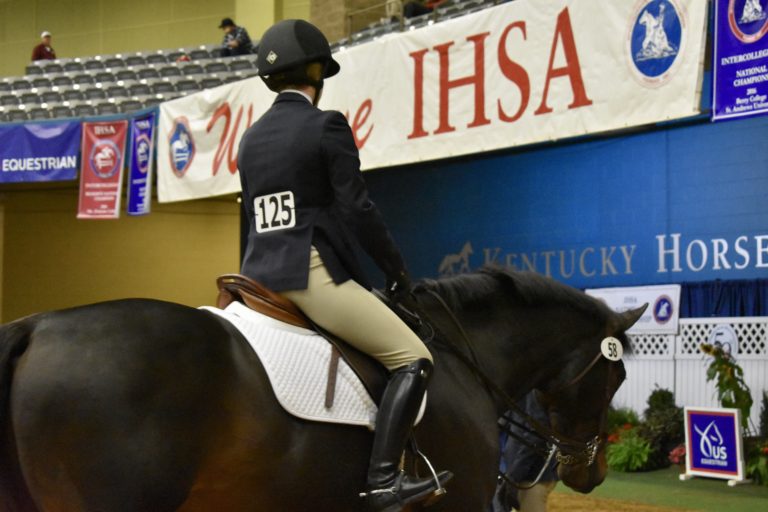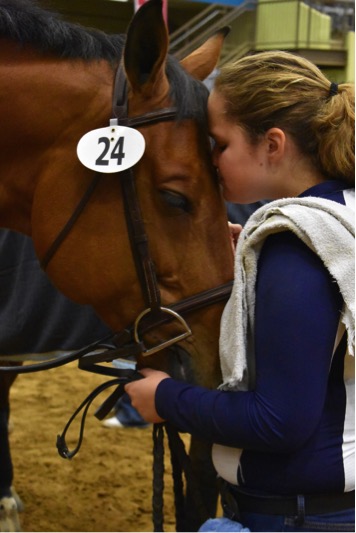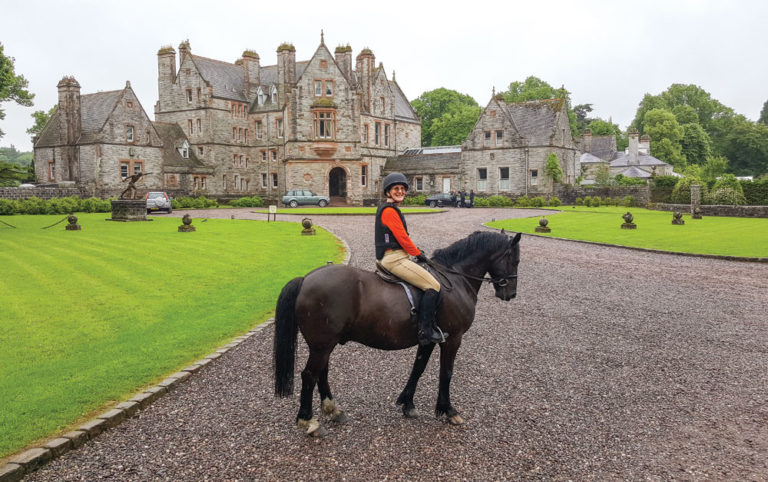In an upcoming Prac story about show-jumper Marilyn Little-Meredith’s venture into the eventing world, Marilyn talks about the challenges many eventers have in their stadium rounds. “Stadium is far less about the jumps and far more about the spaces in between the,” she says in the article. That got me thinking back to the Rolex Kentucky Three-Day Event. As a member of the media, I was lucky to go on a course walk with course designer Richard Jeffery of Dorset, England, who’s been designing Rolex’s stadium-jumping courses since 1998. He’s also the stadium course designer at the Burghley Horse Trials in England and the USEF eventing show jumping advisor. Since I’m course-walking nut and love to learn the course designers’ strategies, I thought I’d share some of Richard’s insights about how he was trying to challenge the riders and horses in the final phase of the four-star event: Fence 1 was a triple-bar jump set 5-feet-3 inches wide. It seemed huge, but because triple bars imitate the natural upward arc of a horse’s jump, they aren’t as difficult as square oxer of the same width. Fences 1 to 2 were set six strides apart. From Fences 2 to 3 and Fences 3 to 4, riders needed to make prompt turns?if they went too wide, they’d have time faults. (The time allowed was 92 seconds.) The first real test on course came at Fences 4 to 5ab to 6, set on a left-bending line. From Fences 4 to 5a (96 feet), riders needed bend out to fit in eight strides. The challenge was that event horses are trained to go through the flags in the corners and they could be drawn to the right side of the line, which would have made it too direct, especially heading into 5ab, a pair of verticals set at a quiet two strides (35 feet) apart directly in front of the grandstands (which by the time the stadium jumping began were filled with cheering spectators). From Fence 5ab to Fence 6 was six strides (84 feet). Regarding fence construction in that line, Fence 4, an oxer, had a slight ramp to make it a little easier for the event horses. In a grand-prix show-jumping course, it would have been square, which goes against a horse’s natural arc, increasing its difficulty. Fence 6 had a brush box set inside the oxer, creating an optical illusion that could pull horses to a deep distance, especially heading toward the in-gate. Fence 6 was also set at maximum height of 4.1 meters (just under 5 feet). Fence 7 was a wall going away from the in-gate. Then came the next big challenge on course?the Rolex triple, Fence 8abc. Because the triple was going away from the in-gate, the striding between the elements was set at a “nice” one-to-two strides. (Sorry, I didn’t get the exact measurements in the triple?there were a lot of us journalists jockeying for position near Richard!) Also, there were deeper jump cups than typically used in a show-jumping grand prix, so the rails were more likely to stay in place if the horses rubbed them. The challenge of Fence 9 was that the horses wouldn’t see it until they got around Fence 3. Also Fence 9 had narrower 10-foot rails instead of 12-foot rails. Again, riders needed to think about making a prompt turn from Fences 9 to 10 to make the time allowed. Fence 10 was another oxer set at the maximum height of just under 5 feet. The last line was Fences 11 to 12 to 13. From Fence 11, a liverpool, to Fence 12, was a bending line set to be ridden ideally in eight strides (100 feet). Though eventing horses will go around cross-country courses without looking at spooky fences, many have problems with liverpools in show jumping. In addition, the liverpool was dug into the footing, which horses find even spookier. After the liverpool, riders could ride forward for three strides, then settle for the remaining five strides. From Fences 12 to 13 was a five strides (72 feet), but each of those fences was a vertical and some horses could get strong at the end of the course. Riders needed to be prepared for that and focus on what their horses were feeling like at that point on course. Richard said that just before he started walking the course with us, he’d been told that the gigantic television screen outside the ring at the end of the last line was going to be “live,” showing the riders jumping the course instead of displaying just static scores as it has in the past. He hoped it wouldn’t be a distraction to the horses over the last fence. As we walked the course, Karen O’Connor and then David O’Connor separately approached Richard and asked if the screen was going to be live. I thought it was interesting that they didn’t miss even this detail when reviewing the course. I guess that’s what separates great riders from good ones. Stay tuned for Marilyn’s article in the July 2011 issue. Read Nancy Jaffer’s postcard about the 2011 Rolex Three-Day Event here.














